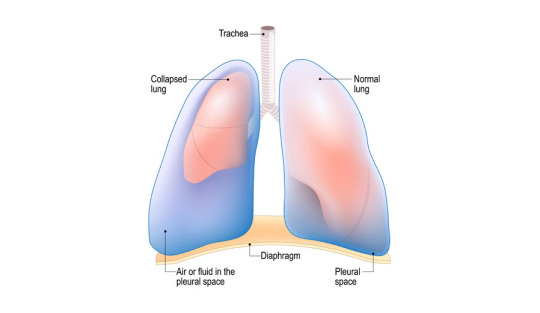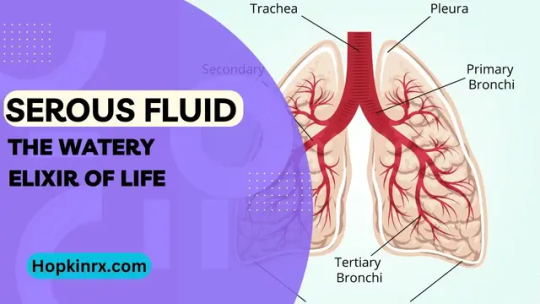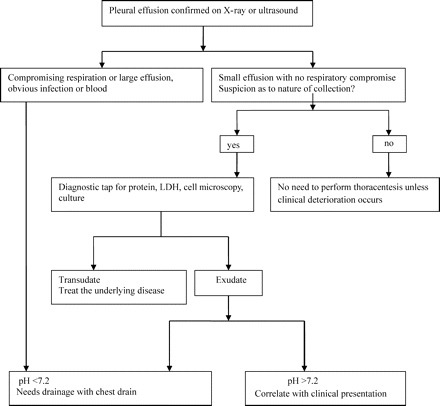#pleural effusion
Text
Doctor: What lab parameters would you ask for?
Intern 1: To the patient or to the pleural effusion?
Intern 2: The pleural effusion is part of the patient, you dumbass.
36 notes
·
View notes
Text
#best lung surgeons in Delhi#Empyema Treatment in Delhi#Pleural effusion#Pleural effusion in Delhi#Pleural effusion treatment in Delhi#thoracic surgeon in Delhi#Treatment Options for Empyema
0 notes
Text
Diagnostic value of pleural Fluid Adenosine deaminase in patients with Pleural Tuberculosis by Sina Parsay M.D in Journal of Clinical Case Reports Medical Images and Health Sciences

ABSTRACT
Background and Objectives: Extra-pulmonary tuberculosis occurs in about 10-20% of patients with tuberculosis. It most commonly manifests as tuberculous lymphadenitis or pleural effusion. Pleural fluid Adenosine deaminase (ADA) activity considered as a useful biomarker for detecting pleural tuberculosis. The purpose of this study was to evaluate the diagnostic accuracy of pleural fluid adenosine deaminase level in patients with pleural tuberculosis.
Methods: In this study, 113 patients with exudative pleural effusion with unknown underlying diagnosis, were enrolled. Physical examination, chest CT, ADA level of pleural fluid, direct thoracoscopic examination, and biopsy of pleura were obtained for all individuals. ADA level and thoracoscipoc appearance of the lesions was then compaierd among the patients with regard to the pleural biopsy report as the diagnostic goldstandard.
Results: The diagnosis of tuberculous pleurisy was established in 40 individuals based on the pathology reports. The mean ADA level of the TB and the non-TB group was 39.90±22.93 IU/L and 30.74±38.27 IU/L, respectively (P-value=0.167). Sensitivity, specificity, positive predictive value, and negative predictive value of ADA test were 35%, 86.30%, 58.33%, and 70.79%, respectively.
Conclusion: Based insuffiecient sensitivity and specificity of ADA, in patients with unexplained exudative pleural effusion especially in those with a high suspicion of tuberculous pleurisy, despite the low level of ADA, direct thoracoscopic pleural evaluation with obtaining multiple biopsies of pleura is highly recommended.
Keyword: Pleural Effusion, Thoracoscopy, Tuberculosis, Diagnostic Accuracy, Extra-pulmonary tuberculosis, Adenosine deaminase
INTRODUCTION
Tuberculosis is a chronic bacterial infection caused by Mycobacterium tuberculosis. It remains a disease with a high rate of mortality in the world especially in developing and low-income countries 1. Extrapulmonary tuberculosis occurs in about 10% -20% of patients and the most common forms of involvement are tuberculous Lymphadenitis and tuberculous pleural effusion 2.
Pleural tuberculosis (TB) which is the topic of this study, is characterized by symptoms such as chest pain, cough, and fever. Chest Radiography of these patients shows a small to moderate unilateral pleural effusion which is lymphocyte dominant in serologic evaluations. The condition also could be bilateral within the minority of cases 1, 3. The prevalence of tuberculosis among all patients with pleural effusion is between 4-22%, and pleura is involved in 3-23% of patients with tuberculosis 4, 5.
Different diagnostic methods have been used to diagnose pleural tuberculosis, including thoracentesis, measurement of serum and pleural fluid adenosine deaminase (ADA) level, pleural biopsy, and thoracoscopy assisted pleural examination and biopsy 3.
Measuring ADA activity in pleural fluid is an easy, inexpensive, fast, and useful way for diagnosing TB in endemic areas, such as South Africa, Asia, Brazil, Spain, and Eastern Europe 6-8. Based on literature a cut-off point of 40 U/L of ADA activity in a lymphocyte dominant pleural fluid is diagnostic for pleural TB. But the validity of the test is not generally accepted by consensus 9-11
With the advancement in endoscopic techniques and video equipment, thoracoscopy has been suggested as a diagnostic and therapeutic modality in patients with pleural tuberculosis, and become more popular among the physicians. Thoracoscopic findings of these patients include caseous necrosis, miliary nodules, exudative pleural effusion, and pleural adhesion or fibrotic septa 12-14.
Considering the important role of ADA in the diagnosis of pleural tuberculosis, evaluating the correlation between pleural ADA level and thoracoscopic findings of pleural tuberculosis seems necessary
15, 16.
This study aims to determine the correlation of the pleural fluid ADA activity and its diagnostic accuracy in histologically confirmed cases of pleural tuberculosis.
MATERIALS AND METHODS
In this cross-sectional study, 113 patients from those who referred to the cardiothoracic surgery department of Tabriz University of Medical Science with unexplained exudative pleural effusion were enrolled. The study population was measured by GPOWER software with a confidence interval of 95% and a test power of 80%. All patients had a pleural effusion with unknown etiology and candidated for thoracoscopy and biopsy. Patients were excluded from the study in case of transudative pleural effusion, post-traumatic effusion, known pulmonary disorders, history of pulmonary or pleural malignancies, and history of radiotherapy on the thoracic cavity.
All patients underwent thoracoscopic study with direct evaluation of the pleural cavity. Multiple pleural biopsies and pleural fluid specimen for ADA analysis were obtained. All tissue samples were evaluated by a certain pathologist and ADA was measured using ADA Reagent Kit in an acredited laboratory of the affiliated university. The ADA level of greater than or equal to 40 U/L considered as diagnostic for TB. According to the pathologic reports, patients were divided into two TB and non-TB groups. The demographic data, examination and thoracoscopic findings, as well as ADA levels were compared between two groups.
Data were collected and analyzed by IBM SPSS statistic for windows version 23.0. (IBM Corp., Armonk, N.Y., USA). Descriptive data were reported using mean, standard deviation, relative, and absolute frequencies. Chi2, paired sample t-test, independent t-test. and repeated measure ANOVA were used for analytical comparison of the variables between the groups as needed. The p-value of less than 0.05 was considered statistically significant. Sensitivity and specificity were calculated based on patient-level analysis of gathered data using confusion matrix and relying on pathologic results as the gold standard diagnostic test.
ETHICAL CONSIDERATION
The study was approved by the ethics committee of Tabriz University of Medical Science under the approval number of 5/d/8716-94/5-6/3. All diagnostic and therapeutic interventions were performed regarding the routine management of patients; no additional intervention or cost was imposed on participants in this study. Patients’ data were recorded as encoded variables without mentioning the name of any participant. None of the patients' personal information was included in this research.
Informed consent was obtained from each participant; nevertheless, patients were excluded from the study in cases they were reluctant to participate in the study.
RESULTS
Of the total 113 patients, 73 (58.4%) were male, and 40 (32.0%) were female, and 42 (33.6%) were smokers. The mean age of the patients was 49.77 ± 18.71 years.
The diagnosis of TB was confirmed in 40 patients according to the histopathologic reports. These patients were stratiffied as the case group (known as group A), and the other 73 with a diagnosis of nontuberculous pleural effusion were considered as the control group (known as group B).
As depicted in Table-1 dyspnea, cough, and pleuritic chest pain were the dominant symptoms of patients at the time of admission with a frequency of 66.37%, 48.67%, and 40.7% respectively. The frequency of fever and weight loss were30.97%, and 28.31%, respectively among the patients. Table-1 also demonstrates demographic data of individuals separately for each study groups.
Regarding the thoracoscopic examination, pleural effusion, pleural adhesion band, miliary nodules, and caseous necrosis were found in 100%, 67.5%, 70%, and 60%, of the group A respectively (Table-2). Among the control group (group B), pleural effusions, thickening of pleura and miliary nodules were the dominant manifestations with a frequency of 100%, 46.57%, and 30.13% respectively (Table-2). The underlying cause of pleural effusion among the patients in control group was: metastasis (23.28%), mesothelioma (5.47%), inflammation (32.87%), fibrosis (36.98%), and fungal infection (1. 36%) as depicted in Table-2.
The mean ADA level was 39.90 ± 22.13 IU/L in group A and 30.74 ± 38.27 IU/L within group B individuals which did not differ statistically significantly between the two study groups (p=0.167).
As delineated in Table-3, 35% of patients in group A has ADA level of greater than 40 (as a diagnostic cut-off for TB) compared to 13.7% in group B (p>0.05). Bar chart for these amounts is also illustrated in figure-1. Sensitivity, specificity, positive predictive value, and negative predictive value of ADA test were measured 35%, 86.30%, 58.33%, and 70.79% respectively (Table-4). Figure-2 demonstrates the ROC curve of ADA test measures.
Figure 1: Chest X-ray reveals pulmonary edema after ICU admission
Figure 1: Chest X-ray reveals pulmonary edema after ICU admission
Figure 1: Chest X-ray reveals pulmonary edema after ICU admission
After 24h of fully controlled mechanical ventilation and 6800ml of diuresis the sedation medication was terminated and the patient extubated uneventfully. No further ventilation support or vasoactive medication was required. The patient recovered in the matter of 72 hours and was discharged from the hospital on the day 7 with a mild arterial hypertension, that was treated by Hydrochlorthiazide 25mg a day.
After 24h of fully controlled mechanical ventilation and 6800ml of diuresis the sedation medication was terminated and the patient extubated uneventfully. No further ventilation support or vasoactive medication was required. The patient recovered in the matter of 72 hours and was discharged from the hospital on the day 7 with a mild arterial hypertension, that was treated by Hydrochlorthiazide 25mg a day.
DISCUSSION
In this study, 113 patients (73 males and 40 females) with unexplained pleural effusion were evaluated for probable pleural tuberculosis by using thoracoscopic examination and biopsy. Meanwhile, the ADA level was measured for all individuals regardless of pathologic findings. The diagnosis of pleural TB established only in 40 individuals according to the histopathologic reports. The ADA level among these tuberculous pleurisy patients was 39.90 ± 22.13 IU/L compared to a level of 30.74 ± 38.27 IU/L in nontuberculous individuals, which was not statistically significant. Based on our results, the ADA test yield a sensitivity, specificity, positive predictive value, and negative predictive value of 35%, 86.30%, 58.33%, and 70.79% respectively.
In a study performed by Van et al., the causes of pleural effusion were evaluated among 95 patients in Netherland. According to their results, they have found tuberculous pleurisy just in five patients, among them the high ADA activity was only detected in four individuals. On the other hand, the underlying pathologies other than TB could raise the ADA activity based on their study. The authors conclude that the high ADA activity level in a country with low tuberculosis incidence is not accurate enough to establish the diagnosis of tuberculous pleurisy 17.
Tian et al. found a sensitivity and specificity of 84.4% and 91.8% for ADA in diagnosing tuberculous pleurisy by evaluating 190 patients with pleural effusion. The cause of pleural effusion was TB in 141 patients of their study population 18. The difference between the results of our study compared to the recently mentioned research is explainable by the high overall incidence of TB in the country in which Tian et al., performed their study.
Valdes et al., in their study, revealed that measuring pleural ADA level is a useful parameter for the diagnosis of tuberculous pleurisy by evaluating 405 patients with pleural effusion. All 91 cases of pleural TB in their study showed an ADA level of greater than 47 IU/L, compared to the elevation just in 5% of non-tuberculous patients 15.
Zemlin et al. demonstrated that measuring the ADA2 isoenzyme is more accurate, and it is superior to ADA in diagnosing tuberculous pleurisy by performing a study on 951 pleural fluid samples, including 387 patients with TB. They suggested that measuring ADA2 level is better to use as a routine test among patients with pleural effusion in endemic areas for TB 11.
Technically, the predictive value of an indicator such as ADA does not only depend on its sensitivity and specificity, but also the incidence of the disease in the study region is also effective 8, 9, 11, 16, 19, 20. The inconsistency between the results might have happened due to the variable prevalence of TB and different sample sizes in which the mentioned studies were performed.
The strength of this study was the use of pathlogical confirmation for the diagnosis of the underlying cause of the pleural effusion in the studied patients. The patients with the diagnosis other than pleural tuberculosis was also considered as a reliable corntol group for calculating the diagnostic accuracy of the applied method. Somehow, the shortness of the study sample size was a weakness of our study. Howere, it should be considered that the overall prevalence of the TB within the population in which the study takes place may alter the results of the study; then, it should also be considered as a limitation of the study.
By comparing our results with previous studies, it can be concluded that the sensitivity, specificity, and accuracy of this test are not suffiecient enough; so, ADA is not utterly useful in diagnosis of pleural TB. Therefore, in patients with pleural effusion with undetermined origin and in patients with a high level of suspicion of TB infection, despite the low ADA level, thoracoscopic evaluation of pleural cavity with obtaining multiple biopsies of pleura would be more appropriate.
Also, in cases with high ADA level and lack of proper response to TB treatments, for further investigation and rule out the other diagnosis, thoracoscopy and pleural biopsy could be beneficial.
However, further studies with larger sample size are suggested.
Acknowledgments: Not applicable
Source of Funding : None
For more information: https://jmedcasereportsimages.org/about-us/
For more submission : https://jmedcasereportsimages.org/
#Pleural Effusion#Thoracoscopy#Tuberculosis#Diagnostic Accuracy#Extra-pulmonary tuberculosis#Adenosine deaminase#ADA#pathology#Mycobacterium#Radiography#TB#IBM SPSS#Sina Parsay M.D#jcrmhs
0 notes
Text
when ur mom's roommate in the shitty post-hospital rehab facility (and said roommate's literal 24/7 guest) are so loud and obnoxious and constantly clearing their throats and hocking up spit sooo loudly that you genuinely start to wonder if maybe you're on a prank show or a "what would you do?" situation or perhaps just in Hell.
#bad!#and my mom can like barely breathe w her pleural effusion so she cant even wear a mask#and i have to track down nurses and literally hound them for hours to get them to take care of her#bc they ignore the call buttons completely so i have to stand around in the hallway where they cant ignore me
2 notes
·
View notes
Text
Sanjivini Super Speciality Hospital in Lucknow offers advanced pleural effusion treatments, providing expert care and personalized solutions for patients' respiratory health.
0 notes
Text
honestly knowing the most likely outcome of lung surgery is ill survive but not be any better.... feels bad
#i think im a lot more afraid of surviving thn dying which is kindof sad#but like if i died itd probably be pretty easy.. like already under#idk how to spell anesthesia#but anyway yeah pretty easy way to die right#and it wouldnt be by suicide so maybe people would hate me a little less after im gone#but if i survive i just have to deal w all the bullshit recovery stuff and i wont be any better. i already know#my doctor said himself hell do his best but its likely my lung wont be able to inflate even after surgery#and he cant get rid of my pleural effusion they dont even know exactly whats causing it#my body is fucked forever whether i live or die. im so unhappy all the time. i feel like itd be better to die easily and peacefully
0 notes
Text
Pleural Effusion surgeon in Delhi
Dr. Neetu Jain stands as a distinguished Pleural Effusion surgeon in Delhi, renowned for her expertise and compassionate patient care. With a profound understanding of thoracic medicine and advanced surgical techniques, Dr. Jain is dedicated to providing optimal treatment outcomes for her patients. Her commitment to excellence is evident through her comprehensive approach to diagnosing and treating pleural effusion, ensuring personalized care tailored to each individual's needs.
As a leading figure in the medical community, Dr. Jain has garnered acclaim for her surgical skill, employing minimally invasive procedures whenever possible to minimize patient discomfort and hasten recovery. Beyond her clinical practice, Dr. Jain is actively involved in research and education, contributing to the advancement of thoracic surgery and training the next generation of healthcare professionals.
Patients seeking expert care for pleural effusion can trust in Dr. Neetu Jain's expertise, knowing they are in capable hands dedicated to their well-being and recovery.

0 notes
Text
mutuals to share my medical records with
#is this anything#i am very tired#oh im so cozy eith pillows anf blankies and teddy bears PLURAL. two teddu bears my regular one and my biiiiig one#speakinh of plural i have a slight pleural effusion ehehe#am ok tho. jus covid. grtting better#kay sleepytimes goomnight#my post#my tags
0 notes
Text
Serous Fluid: The Watery Elixir of Life
Serous Fluid: The Watery Elixir of LifeIntroductionWhat is Serous Fluid?The BasicsCompositionProduction and DistributionSerous MembranesSerous CavitiesFunctions of Serous FluidLubricationProtectionImmunological RoleSerous Fluid DisordersAccumulation: Serous EffusionReduced Production: DehydrationInfection: SerositisMedical SignificanceDiagnostic ToolTreatment ImplicationsSerous Fluid and…

View On WordPress
#cytopathologic diagnosis of serous fluids#excessive serous drainage#excessive serous fluid#jp drain serous drainage#serosanguineous drainage#serosanguineous drainage after surgery serous pleural fluid#serosanguineous exudate#serosanguinous fluid after surgery#serous discharge#serous drainage#serous effusions#serous exudate#serous fluid#serous fluid drainage#serous fluid in brain#serous fluid leaking from legs#serous fluid leaking from skin#serous sputum
0 notes
Link
Looking for Pleural Effusion Treatment in Hyderabad, contact Dr Alla Gopala Krishna Gokhale, specialist in Pleural Effusion Treatments.
#pleural effusion symptoms and causes#best lung specialist in hyderabad#pleural effusion treatment in hyderabad#best lung transplant surgeon in hyderabad
0 notes
Text
“Bro, for the last time, mononuclear empyema DOES NOT EXIST!”
#medicine#med school#medblr#internal medicine#pleural effusion#empyema#immune system#know your white blood cells
15 notes
·
View notes
Note
So what you want Kate to not get chemotherapy so that she gets even more worse and more unwell? Who even thinks like that and William doesn’t smoke

First off, it's well known that William smokes. Just because he hides it better than Harry doesn't mean he doesn't do it. He clearly has smoker skin. That's why his skin looks so terrible & dry. So dry that soon we might be able to grate cheese on it.
"You want Kate to not get chemotherapy so that she gets even more worse and more unwell?"
Your ignorance is clearly showing.
This is how people die from cancer:
Catabolism: the body breaks down on a cellular level; substances released by tumor cells are strong anorexics.
Secondary infection due to immune system suppression.
Blockage of vital structures: trachea/esophagus, superior vena cava (SVC) syndrome, impacts to the spinal cord, pericardial effusion, pleural effusion, etc.
Side effects of medication/treatment: immune suppression, pulmonary fibrosis, Graft-versus-Host-Disease (GvHD), etc.
You do not die from cancer just because you have "cancer."
I wrote a long post yesterday differentiating that different people have different physiology. Just because you have "cancer" does not mean that it poses a threat to your life or health. Plenty of people have "cancer" that does not progress at all or affect them in any way. Just because you have "cancer present" does not mean it will affect your life or health in any significant way.
The situation is really like the anon said:
"Catherine has a much more serious cancer than they are letting on, hence, the decision to have chemo is not even a discussion point,"
"she’s not having chemo and there’s another reason why she’s missing in action,"
"she and William are panicking and she’s receiving chemo regardless"
My bets are on numbers two or three.
Kensington Palace is clearly lying. Can't wait for it to be revealed! KP's strategy before Kate's cancer announcement was to release the news that her medical records had been breached and paint Kate as a victim. After the cancer announcement, it was those pesky conspiracy theorists and the axis of evil who was to blame for Kate's reputation being slagged around the world, not the utter incompetence of William and KP.
Let's not forget that William is an emotionally damaged, thin skinned, control freak with a privacy fetish.
Let's also not forget that next Monday, 01 April 2024, begins a new fiscal year for the BRF.

#ask#hate mail#medicine#smoking#William The Prince of OWN GOALS#William The Terrible#William The Weak#William The Prince of Wales#prince william#Prince & Princess OWN GOALS#kate middleton#Catherine The Princess of Wales#kensington palace#palace officials#lies lies lies#pr games#strategery#Wales fandom ARMAGEDDON
14 notes
·
View notes
Text
i’m currently in hemodialysis, manning my patient who was admitted weeks ago due to pleural effusion. she was supposed to be discharge today but she deferred because she wants to finish her dialysis this week before going home on saturday. she has improved so much. she can sleep comfortably in her bed now, compared to weeks ago where she could only take naps on her chair because she was really edematous (her extremities were really swollen). we are so happy for her when we found out this morning.
i can’t believe it’s our last day already! the last day! of november!! BYE ward! BYE OPD! i’m dreading the prison which is CCU (kidding). i don’t know what comes after, but i hope it’s smooth and good. i hope we help each other, celebrate each other’s wins, and survive the “outside” rotation in one piece. i’ll be spending my christmas and new year not with my family, but with my dutymates because we’ll be on duty on those dates. lol.
this month, what i’m proud of is that i learned alot on how to diagnose patients, especially in OPD. my clinical eye improved! on our last 3 days of OPD, i was so happy because my resident agreed with my diagnoses that they told me i’d pursue IM and someday become a rheumatologist because most cases i handled in OPD were rheuma cases. lol. i am getting better at making differential diagnoses as well. not great great, but i’m better. i’m happy.
last day. i can’t believe it. november just flashed by.
#studyspo#studyblr#study#studycommunity#bujo#desk#productivity#bookblr#bullet journal#notebook#myhoneststudyblr#adelinestudiess#notebookist#noodledesk#stuhde#lawyerd#tbhstudying
38 notes
·
View notes
Text
At Sanjivini Super Speciality Hospital in Lucknow, we offer advanced treatments for pleural effusion, employing a combination of thoracentesis, medication, and occasionally surgical intervention for effective management and patient comfort.
0 notes

